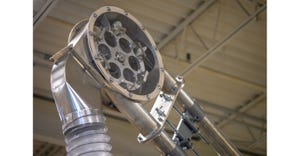February 6, 2020

Purity, as defined by Webster, is the quality or state of being pure. An undergraduate engineering student can be led to believe that pure components are routinely encountered in industry. Then that student gets a co-op or full-time position in industry and reality hits, since “pure” components are rarely seen. In industry, the “purity” of a product is really set by the product specification. The product specification is a set of parameters that are important to the end user of the product. These can be impurities or some other physical property of the product, such as particle size. To ensure that the product meets the customer’s required “purity”, a certificate of analysis is issued to document the measured values for a specific “lot” of material.
What happens when a lot of material doesn’t meet the product specifications? The choices are typically to dispose of the material, reprocess the material, sell the material as offgrade, or blend it with product that meets the product specification. For many industries and products, blending is by far the option that is used the most. With gaseous and liquid products, a blending operation may merely be just pumping the out of specification material into a tank of in specification material. Convection due to pumping the material into the tank and diffusion will usually be sufficient to produce a homogenous blend. With a bulk solid, the blending operation becomes a much bigger challenge.
For nearly monosized materials, such as plastic pellets, a blending operation usually consists of large storage silos with internal static components that create velocity field gradients as the material is discharged from the silo. The material is typically recirculated via an external pneumatic conveying system to provide better blending than could be achieved by just filling and emptying of the silo. Usually recirculating the silo contents twice is adequate to provide a well-blended product. There are numerous commercially available blenders of this type.
When the product has a range of particle sizes, blending operations become much more problematic if the parameter of interest is particle size. That is because a difference in the particle size ratio as small as 1.2 to 1 may lead to particle size segregation during handling. Even if you have an ideal blend in your blender, that may not be maintained in the final package if the process is not designed and operated to prevent particle size segregation. A careful analysis of the entire process needs to be performed to ensure that the product does not segregate during handling. That analysis includes the mixer itself since blending too long can lead to segregation in the mixer.
Another key aspect in blending of bulk solids is the scale of scrutiny. The end use of your product will dictate how much variability is acceptable. If the product is used in 1,000-kg portions, then each 1,000-kg portion, on average, needs to meet the product specification. If the end use is much smaller, such as 100 mg, then each 100-mg portion must meet the product specification. This is extremely important in the pharmaceutical industry where variability from tablet to tablet in a medication may have life threatening consequences. For those demanding applications, a statistical analysis of the size and number of samples taken to verify the product “purity” is typically warranted.
I’ve loosely used the word “purity” to mean that a product meets its specifications. For bulk solids, meeting the required “purity” often means having a blending operation. When you have a broad particle size distribution, you not only need to achieve a good blend in a blending operation, but also maintain it as the product is handled in the plant. That requires you to know your material and the fundamentals of the unit operations in your plant.
Jim Koch is a solids processing subject matter expert at Dow Inc., Midland, MI. He has more than 30 years of industrial experience in the solids processing field. This includes projects around the globe involving many different types of solids handling unit operations and evaluation of combustible dust hazards. Koch is also a member of two NFPA technical committees related to combustible dusts.
You May Also Like


